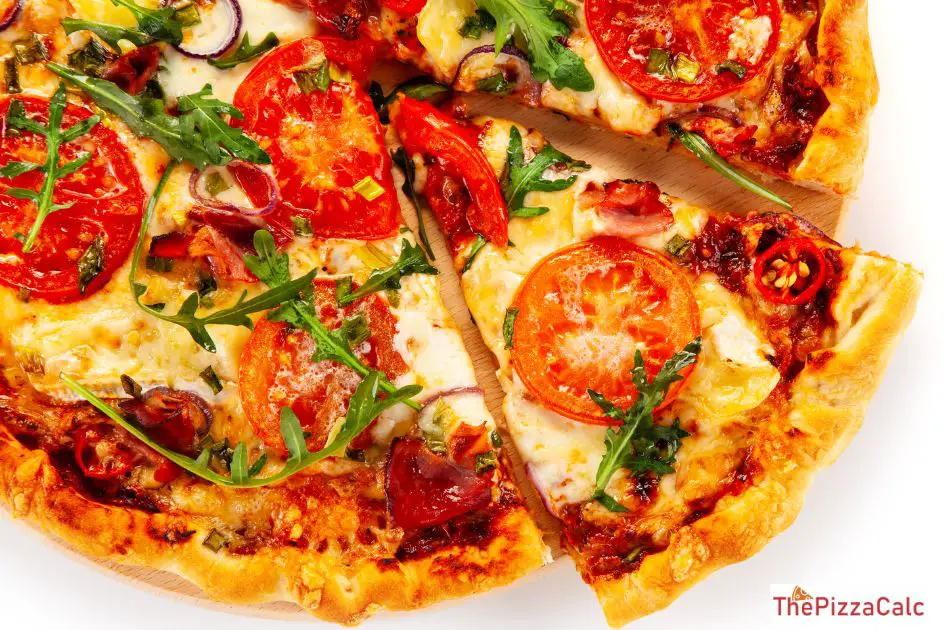When it comes to ordering a delicious pizza, size matters. The 10 in vs 12 in pizza debate is a common one among pizza lovers, and making the right choice can be the difference between having just the right amount of food or having leftover pizza for days.
What’s the Difference – 10 in vs 12 in Pizza?
In simple terms, a 10-inch pizza is smaller in diameter than a 12-inch pizza. When considering the total area, there’s a notable difference in square inches between the two sizes. The 12-inch pizza offers a larger surface area. But beyond just the size, the number of slices also varies. Typically, a 10-inch pizza is cut into 6 slices, while a 12-inch pizza is often divided into 8 slices. So, not only does the 12-inch pizza provide more surface area, but it also usually has more individual servings, making it a popular choice for those with a larger appetite or when serving a slightly larger group of people.
Why Pizza Size Matters
Pizza size not only determines how much pizza you get but also affects the number of slices, the amount of toppings, and the thickness of the crust. A larger pizza, like the 12-inch pie, might have larger slices and possibly more of your favorite toppings. Conversely, smaller pizzas might feel thicker if the type of crust remains constant.
It’s a good idea to consider the number of people you’re serving. While a 10-inch pie might be perfect for a small gathering, a 12-inch pizza or even a larger size like a 14-inch or 16-inch pizza might be better for larger groups. Need a detailed comparison between medium and large pizzas? Check out this insightful resource on medium vs large pizza.
Deciding on the Perfect Size
The perfect size of pizza boils down to personal preference, the number of toppings you like, and how many people you’re feeding. As a general rule of thumb, a 10-inch pie is often considered a small pizza or sometimes a medium-sized pizza in some pizza places like Papa John’s or Pizza Hut.
On the other hand, a 12-inch pizza is typically labeled as a medium pizza. Curious about how many a larger pizza can feed? Here’s a great guide on how many people a 16-inch pizza can feed.
Considering the Crust
The thickness of the crust can influence how filling the pizza feels. Some pizza lovers prefer a thinner crust for a 12-inch pie because it complements the larger size, ensuring the center of the pizza isn’t soggy from too much tomato sauce and toppings. However, if you’re someone who enjoys a thicker crust, ordering a smaller size might be a good idea to ensure that the crust isn’t overpoweringly thick.
Price and Value
Another aspect to consider is the cost. Generally, a 12-inch pizza will cost more than a 10-inch pie due to the larger amount of dough, cheese, and toppings. But when you break it down by square inch, larger pizzas often provide better value. So, if you’re looking to satisfy a larger appetite or serve a larger group of people, going for a larger pizza might be an ideal choice.
Toppings and Nutritional Facts
The size of the pizza can also influence the number of toppings and their distribution. Larger pizzas allow for a variety of toppings spread out over a larger surface area, ensuring equal slices with equal amounts of toppings. If you’re conscious about calorie intake, be sure to check the nutritional facts. Generally, the more toppings and cheese you have, the more calories each slice will contain.
Final Thoughts
When deciding between a 10-inch and 12-inch pizza, consider the number of people eating, your preferred thickness of crust, the amount of toppings, and your budget. With the information in this blog, making an informed decision about the right size pizza for your next gathering should be an easy way to please both your taste buds and your guests.
So, the next time you’re ordering from popular options like Papa John’s, Pizza Hut, or any other pizzeria in the United States, you’ll be well-prepared to choose the perfect choice for your pizza needs!

